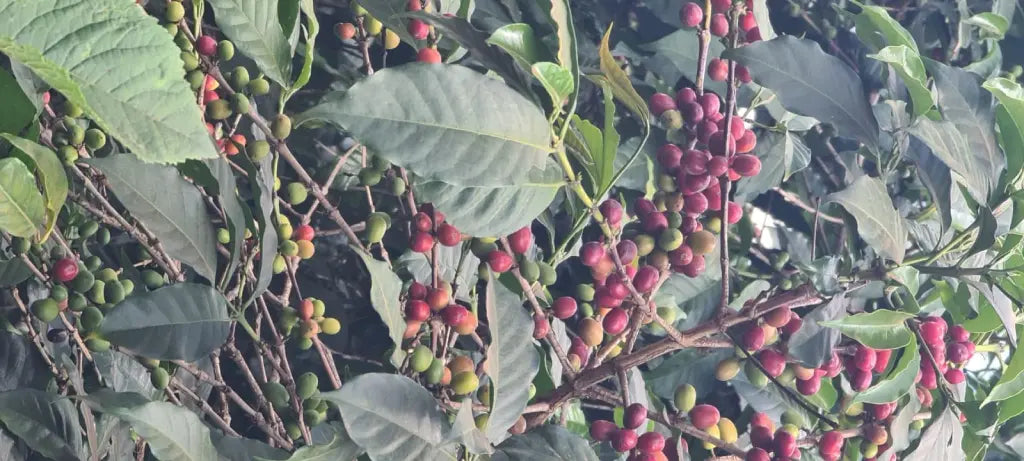
Coffee cultivation and harvesting practices in Ethiopia
Adiam EngedaShare
Coffee cultivation and harvesting have a centuries-old tradition in Ethiopia. Ethiopia is the country where the Arabica coffee plant was first discovered. Since coffee is native to Ethiopia, it is perfectly adapted to the climate and usually grows in the shade of other plants without the use of agricultural chemicals. This is an immense advantage that Ethiopia has over other coffee producing countries. As coffee was brought to other countries, people had to find ways to adapt it to the local climate. Arabica coffee grows best in places that have a similar climate to Ethiopia - mountainous and tropical climates with wet and dry seasons.
Ethiopia, the country of origin of Arabica coffee, has another advantage. Thousands of heirloom varieties are grown in Ethiopia. Heirloom Varietal" is a collective term for a mixture of these native varieties that have been grown and harvested in a region for generations. It is estimated that there are more than 10,000 varieties of coffee in Ethiopia. Each of them has its own characteristics, which are caused by different growing conditions, processing methods and Cultivation techniques are influenced even further. In many cases, Ethiopian farmers grow their own unique heirloom varieties, most of which do not grow anywhere else in the world, resulting in a unique flavor profile that reflects the terroir and farming methods of the region. In contrast To do this, coffee farmers everywhere else in the world must grow certain types of coffee and create the ideal conditions, such as planting additional trees to provide shade for the coffee trees.
There are three types of coffee cultivation in Ethiopia: forest coffee, garden coffee and plantation coffee.
Forest coffee
Forest coffee is the name given to coffee that grows in natural forests. It is also known as wild coffee because it grows in the wild under the natural forest cover with little or no human intervention. It is the traditional method practiced by small farmers, especially in the birthplace of Arabica coffee, southwest Ethiopia. Forest coffee is hand-picked, sorted and processed using traditional methods, including sun-drying and hulling. This is a labor-intensive process, but results in high quality coffee that is appreciated by coffee lovers worldwide.
In addition to its high quality, forest coffee is also ecologically sustainable. It is grown in a natural ecosystem and requires little or no intervention from farmers. However, the yield of forest coffee is lower compared to other production methods.
Garden coffee
Garden coffee is the most popular method of coffee production in Ethiopia. It is grown in small plots near farmers' homesteads, usually less than a hectare in size. The coffee plants are grown alongside other crops such as vegetables, fruit trees and spices, creating a diverse ecosystem that maintains soil fertility, maximizes yield and reduces the risk of pests and diseases.
Coffee growing regions such as Sidamo, Yirgacheffe, Harrar and Guji are known for the production of garden coffee. Farmers in these areas deliver their coffee to nearby washing stations, to which everyone contributes. The result is a blend with complex and distinct flavor profiles that reflect the region's terroir and growing practices - the truest expression of local terroir. This is one of the many factors that make Ethiopian coffee so valuable and sought after.
Plantation coffee
Plantation coffee is a method of coffee production in Ethiopia in which the coffee is grown on large farms owned by companies or wealthy individuals. Although it only accounts for about 5% of total coffee production in Ethiopia, it is a growing trend. Plantation coffee relies on intensive inputs such as fertilization, integrated weed and pest control, regulated shading and plant density. This production method provides relatively higher yields than forest and garden coffee.
